What is a PC? When you're reviewing the Microsoft Surface Pro, asking yourself that question is practically obligatory. After all, when the device launched nearly five months ago, Windows 8 was still new, and the idea of a tablet that's every bit as productivity-oriented as a high-end laptop was still a novelty. But today, I don't think there's any question. Devices like the Surface Pro are not only the future of the Windows PC, they're already delivering some exciting possibilities in the present. Is this a cruise worth departing on now? Or is it better to give them a few years to better flesh themselves out? Let Gizmag lend a hand, as we review the Microsoft Surface Pro.
In case you need a quick primer, the Surface Pro is basically a tablet with the guts of a laptop. You can use it much like you'd use an iPad, or you can snap on one of Microsoft's companion keyboard covers to bring its inner laptop to the – ahem – surface. It's the kind of device Windows 8 was designed for: straddling the border and blurring the lines between desktop and mobile.
Be sure not to confuse it with the Surface RT, which runs a much more limited (mobile processor-based) version of Windows. The Surface Pro runs full Windows 8, so apps that you could run on Windows 7, Vista, or XP are all fair game. Surface RT doesn't give you that luxury.
Big and beautiful
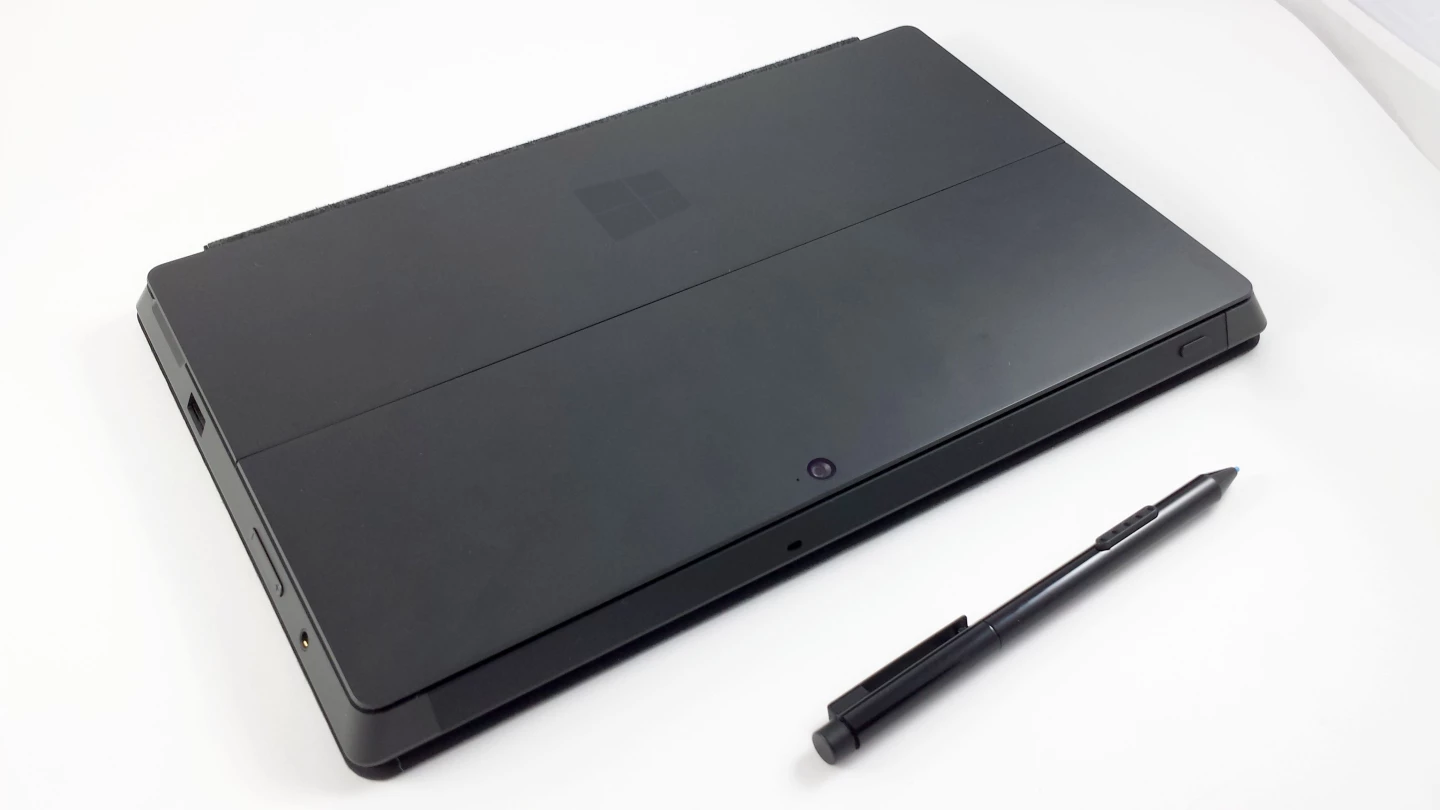
When using the Surface Pro strictly as a tablet, it's probably one of the beefier slates you'll lay your hands on. At 907 g (2 lbs), it's 39 percent heavier than the iPad. It's also 44 percent thicker than Apple's tablet. The Surface Pro is many things, but a trim featherweight it is not.
But don't let that scare you away. Of course it isn't as light and thin as an ARM-based tablet. This puppy's internals compete more directly with a MacBook Air than with an iPad. While the iPad is a tablet through-and-through, the Surface Pro is a full-fledged PC in a tablet's body.
Keeping that in mind, the Surface Pro rarely felt too big and heavy for me. Sure, there's some extra heft, and it's probably the most noticeable when settling in for a long eBook reading session (it's heavier than five Kindles combined). But all you have to do is open Photoshop, iTunes, or Skyrim to remind yourself that the Surface Pro is a different beast.
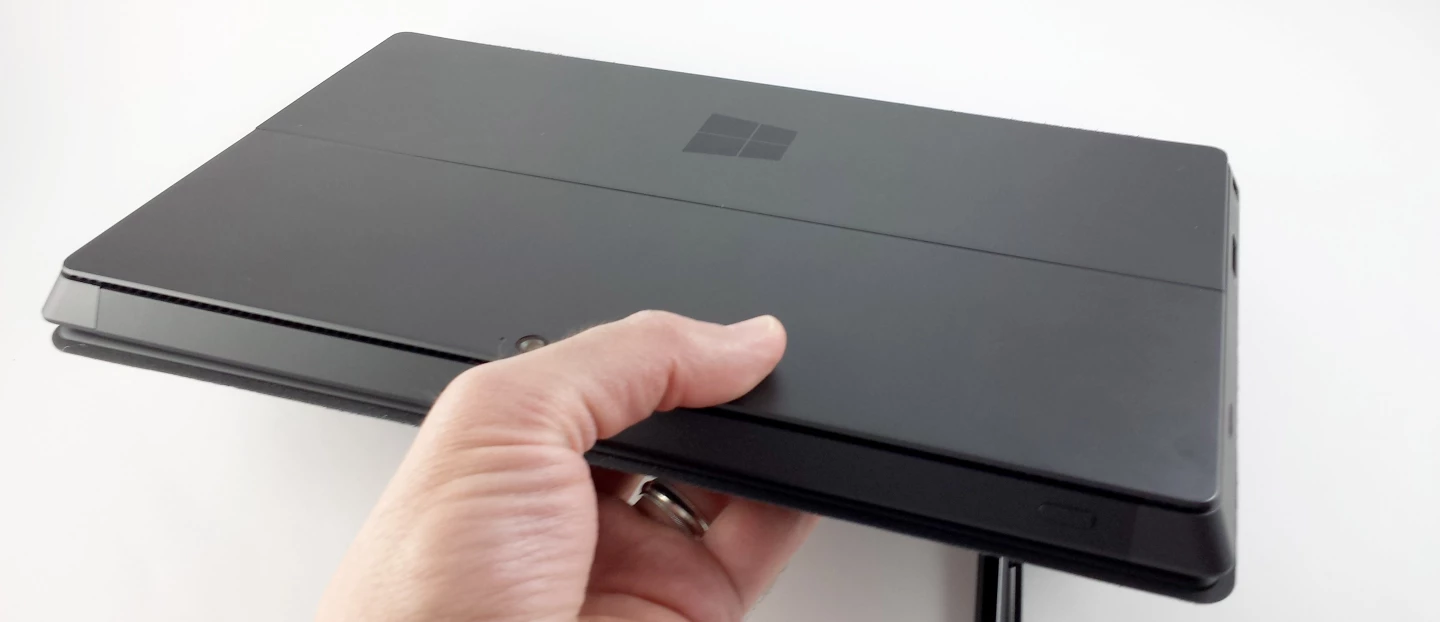
The tablet is made of a magnesium alloy that Microsoft calls "VaporMG" (thanks, Microsoft marketing department). The material feels much sturdier and more high-end than plastic, and is a refreshing change from Apple's old standard, aluminum. The Surface Pro is smooth, solid, and tightly-constructed.
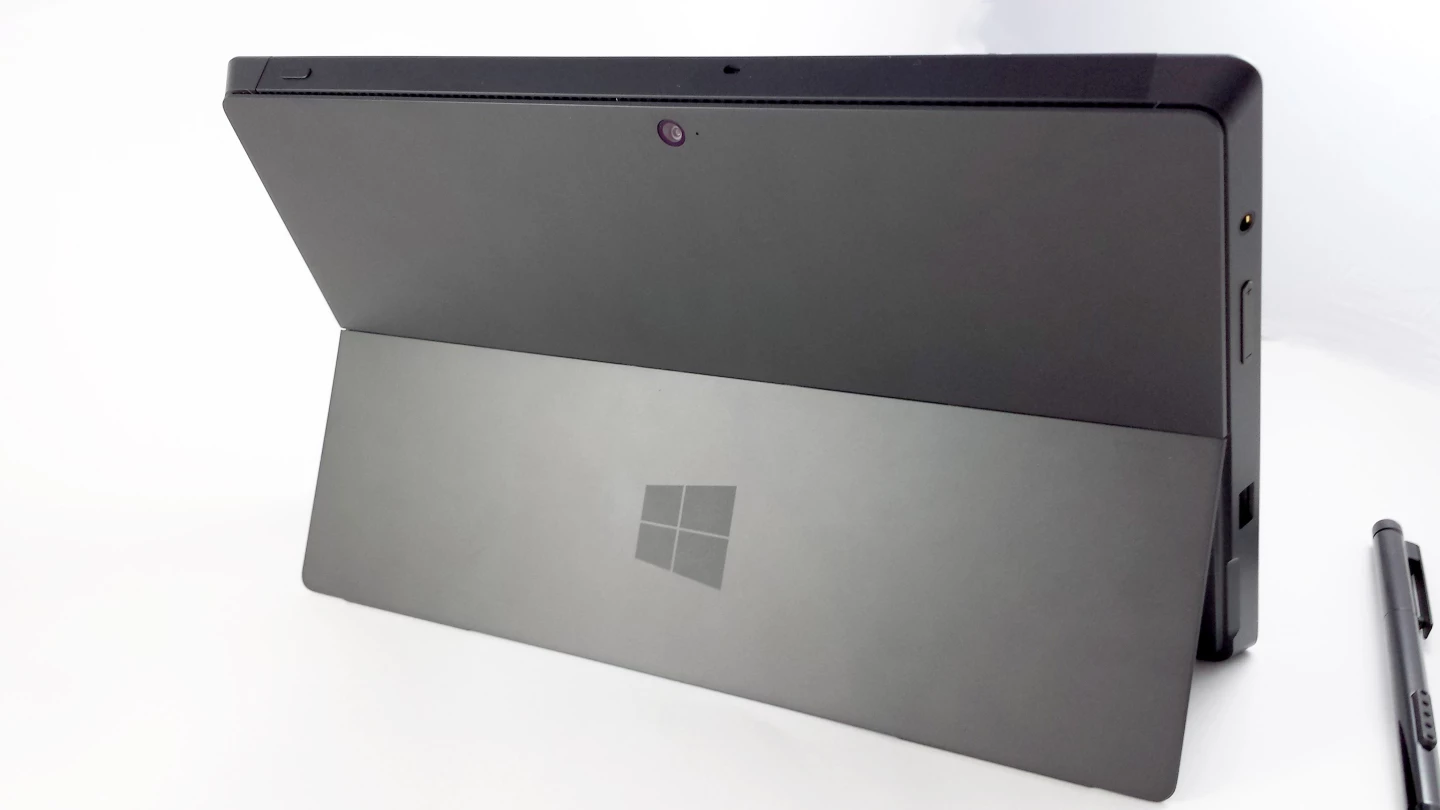
At the base of the Surface's backside is a kickstand, running the length of the tablet. The kickstand props the device up at a fixed angle (about 26 degrees), and plays a big role in converting the computer into laptop/desktop mode.
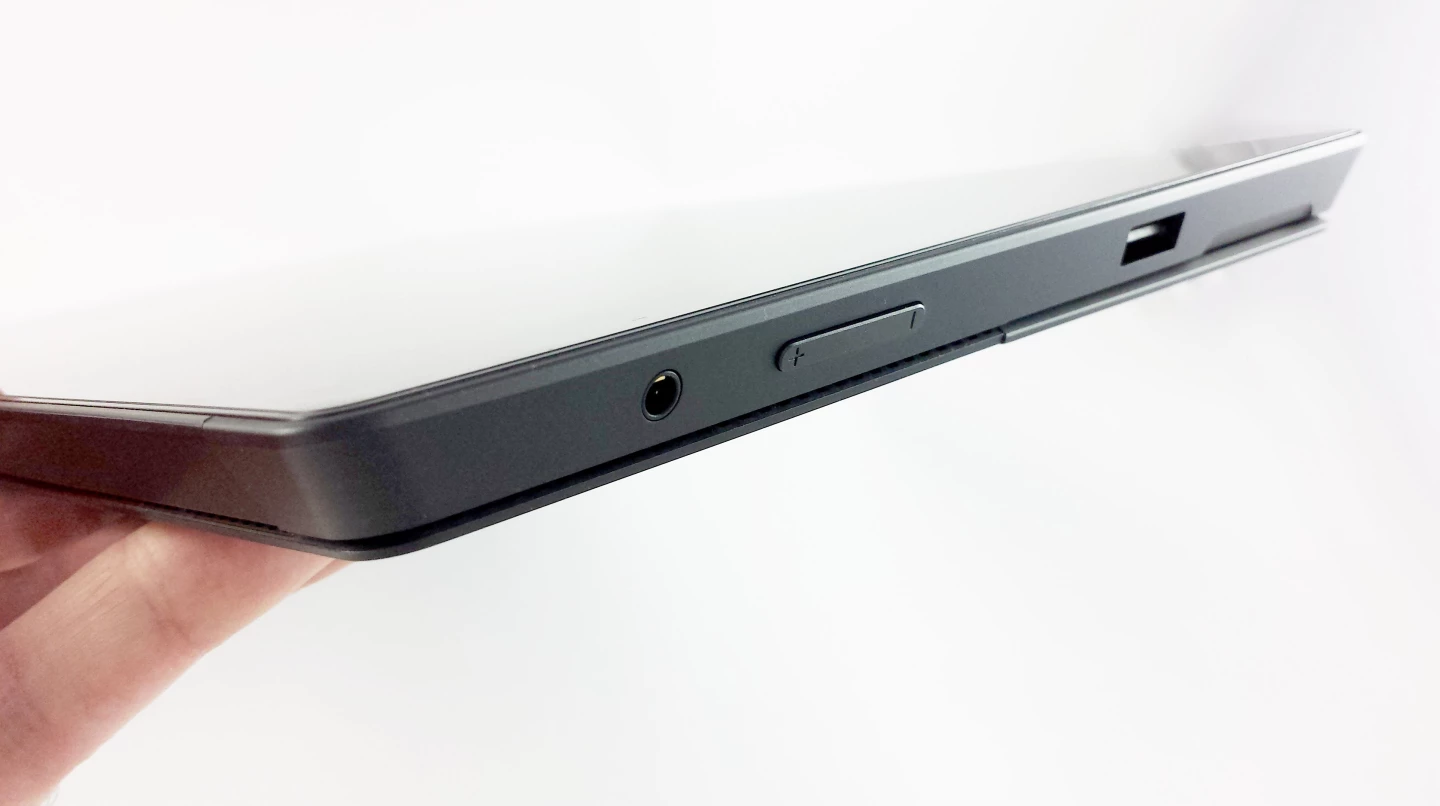
We have a single USB 3.0 port on the device's left side. It would have been nice to see a second USB port onboard, but enough accessories can connect wirelessly that I didn't find it too limiting. There's also a microSD card slot on the upper right side that can expand your storage by up to 64 GB (more on that in a minute). On the lower right side lives a Mini DisplayPort, great for converting Surface Pro into a full desktop replacement or watching movies on your TV.
Surface Pro has a lone capacitive button emblazoned with the Windows logo below the screen. That's your one-click shortcut to the Start Screen. The power/sleep button is perched on the top right edge of the tablet, with volume controls rounding things out on the left.
The Surface uses a proprietary Microsoft charger that bears more than a passing resemblance to one of Apple's recent MagSafe chargers. Like Apple's charger, it magnetically snaps itself into the port when you're fumbling around in the dark. You can also stash the stylus there when you aren't charging.
Display
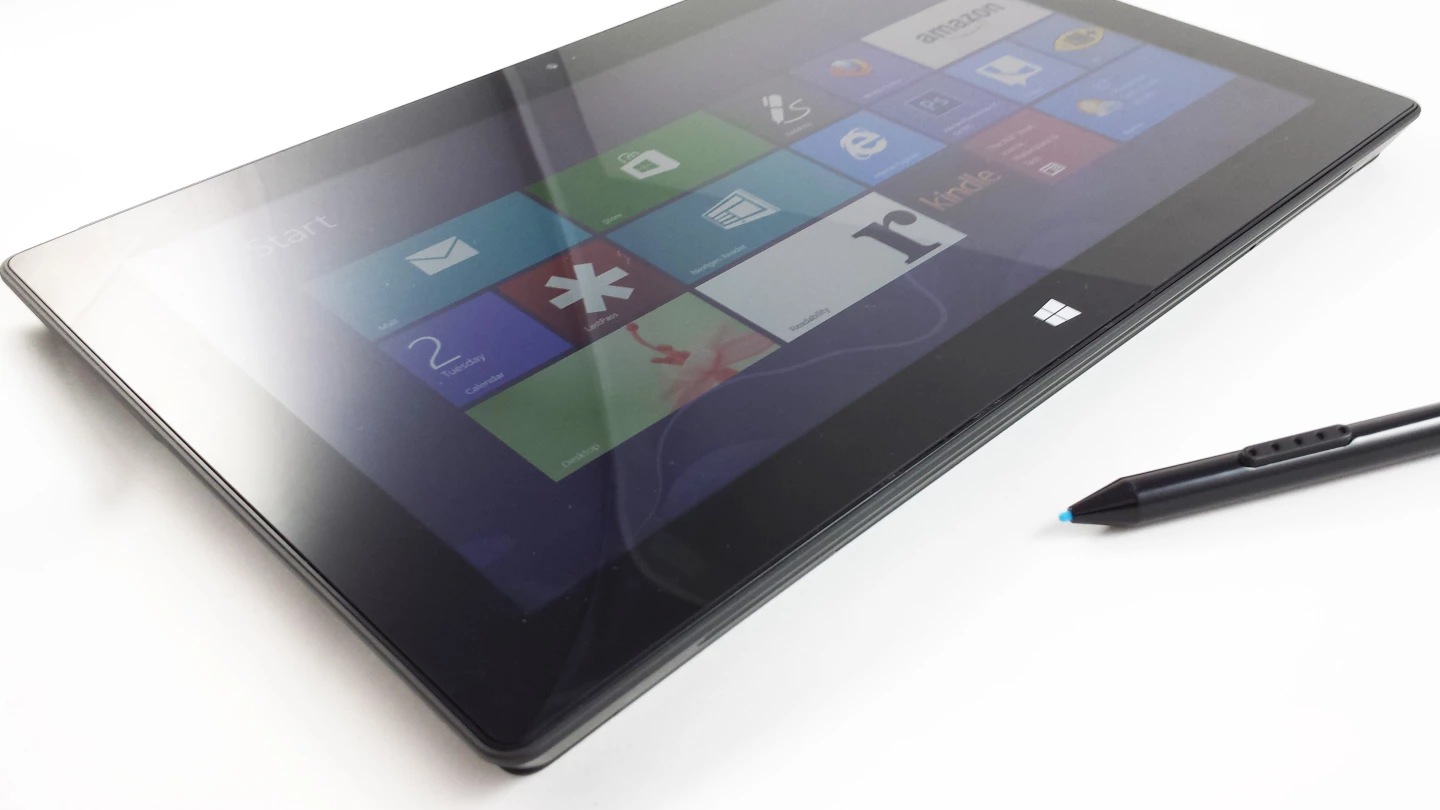
Measured diagonally, the Surface Pro's display is 10.6 in, which puts it on the longer end of the measuring stick for tablets (it's six percent larger than the iPad's screen), and the shorter end for laptops (it's 16 percent smaller than the 11-inch MacBook Air's screen).
It has 1080p (1920 x 1080) resolution. At 208 pixels per inch (PPI), it isn't technically as sharp as tablets like the iPad 4 or Nexus 10, but that's tempered by Microsoft's ClearType subpixel rendering. It makes text look much crisper than it otherwise would, and in my entire time using Surface Pro, I never once felt like the screen needed to be sharper. During regular use, I noticed very little difference in crispness between the Surface Pro and the MacBook Pro with Retina Display, which has a density of 227 PPI.
The screen's only potential drawback relates to the way Windows handles high resolution displays. The default settings (native resolution, 150 percent DPI) were perfect for the Start Screen environment, and worked well for most desktop apps. Desktop programs like Internet Explorer and Firefox gave me no major issues with the sizes of the UI elements.

But then you'll bump into the odd third-party app that developers desperately need to update for these kinds of devices. Photoshop, for example, has ridiculously small icons and menus when using the Surface Pro's native settings. If you drop the device's resolution setting down to 1366 x 768 with 100 percent DPI, Photoshop is sized just about perfectly. But then all of your other apps look a little fuzzy, as they're no longer using the screen's full 1080p resolution. And who wants to switch those settings back-and-forth every time you use the app that's giving you trouble?
Taken as a whole, the scaling issue probably won't amount to a deal-breaker for most users. But if any of your favorite desktop apps fall into the Photoshop category of developer neglect, you might find yourself splitting a few hairs while struggling to pinpoint those teeny-weeny onscreen target areas.
Justifying Windows 8
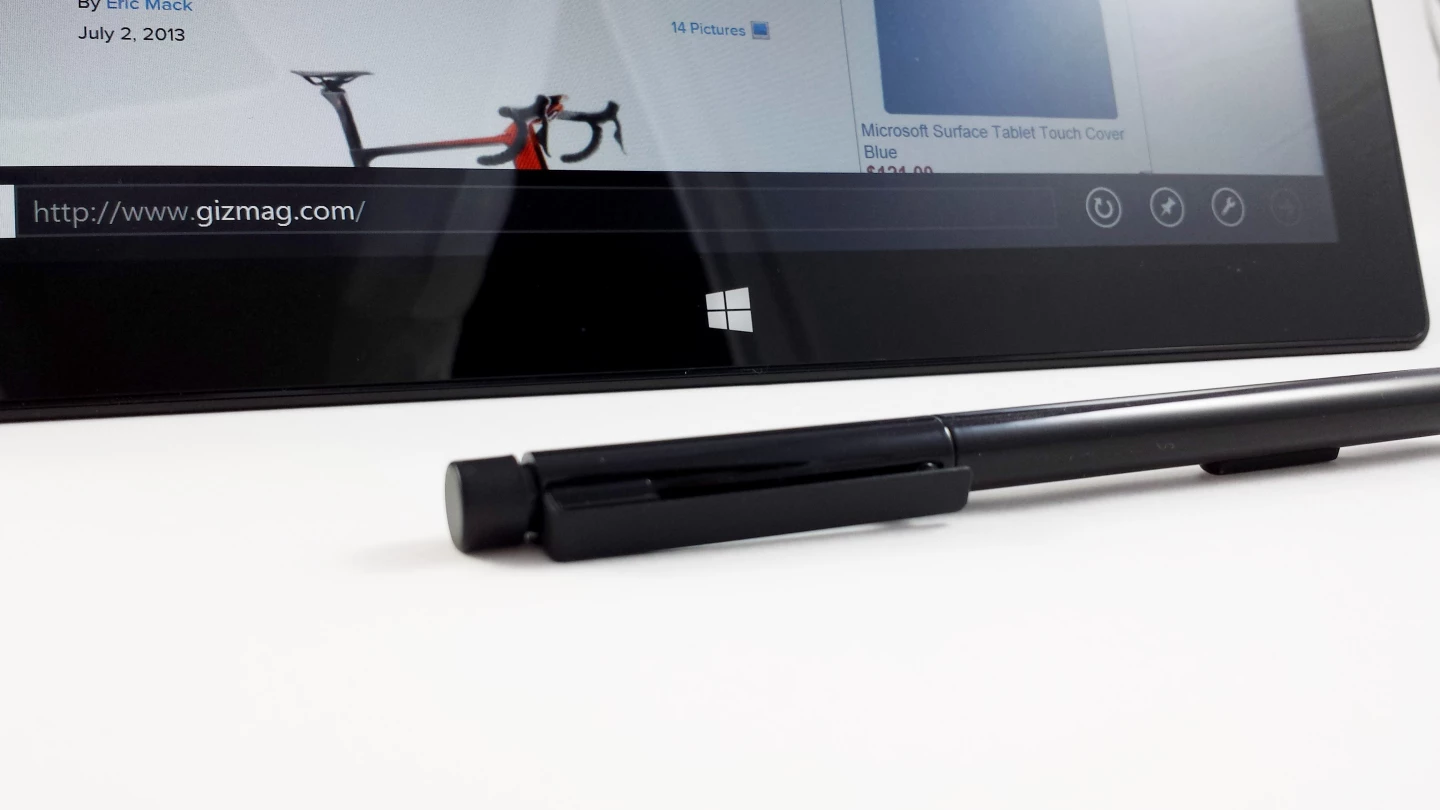
Microsoft has taken plenty of flak for forcing the Modern UI Start Screen on desktop users in Windows 8. If you ask me, that blowback is justified: the touch-centric part of Windows 8 has a place, but it definitely isn't on an old-school desktop PC. Giant squares that you have to click with a tiny mouse cursor? No thank you.
But spend a few minutes with the Surface Pro, or any of the other recent hybrid/convertible/touch-friendly Windows 8 devices, and you quickly learn to appreciate that Start Screen. The Modern UI (i.e. Metro UI) is the rare touch-based interface that doesn't look like it was influenced first and foremost by the iPhone and iPad. Live tiles, beautiful Segoe UI font and one-button access from anywhere in Windows make the interface perfectly-suited for devices like Surface.

The weakest part of Windows 8 is the selection of touch-friendly apps, which all come from the Windows Store. There are some outstanding apps that replace missing apps that I typically use from other platforms, like NextGen Reader for RSS, or Readability (unofficial) as a read later service. There are also apps from popular services like Kindle, Evernote, and Shazam to keep the situation from being too dire.
But let's not kid ourselves here. The Windows Store has a long way to go to catch up with the App Store and Google Play. You should find enough quality apps to make it work, but don't expect an abundance of your favorite mobile apps.
If the Metro part of Windows 8 was all you had, you'd just be looking at a pretty iPad alternative with an inferior app store (in other words, the Surface RT). But what makes the Surface Pro special is the combination of the Modern UI and the other half of the bipolar Windows 8: the desktop.
Navigating through the Windows 8 desktop on a tablet using only your fingers isn't a very natural experience. But never mind that. Because once you add the Surface Pro's stylus (included) and Type Cover (not included), the desktop becomes the place where you can really get down to business.
Get the full desktop version of the Microsoft Office Suite, and take your work on the go. Run iTunes, and back up your old iPad or download the Beatles discography. Grab a controller, install Steam, and get your Skyrim or Portal 2 on. Hook Surface up to your TV, activate Steam's Big Picture Mode, and enjoy a makeshift gaming console.
The desktop is where you remember that the Surface Pro isn't really an iPad rival, but a new, more convergent, kind of PC that could replace an iPad for some people.
The new mouse and keyboard

The Surface Pro's stylus and keyboard cover are essential pieces of this puzzle. If you're buying the Surface Pro, you'd may as well plan on adding an extra US$120-130 to your purchase, because we don't see much point in owning one without also buying one of the keyboards. Microsoft offers two options in that department: the Touch Cover and the Type Cover, both of which snap magnetically into the tablet, and fold over to protect the screen when you aren't using it.
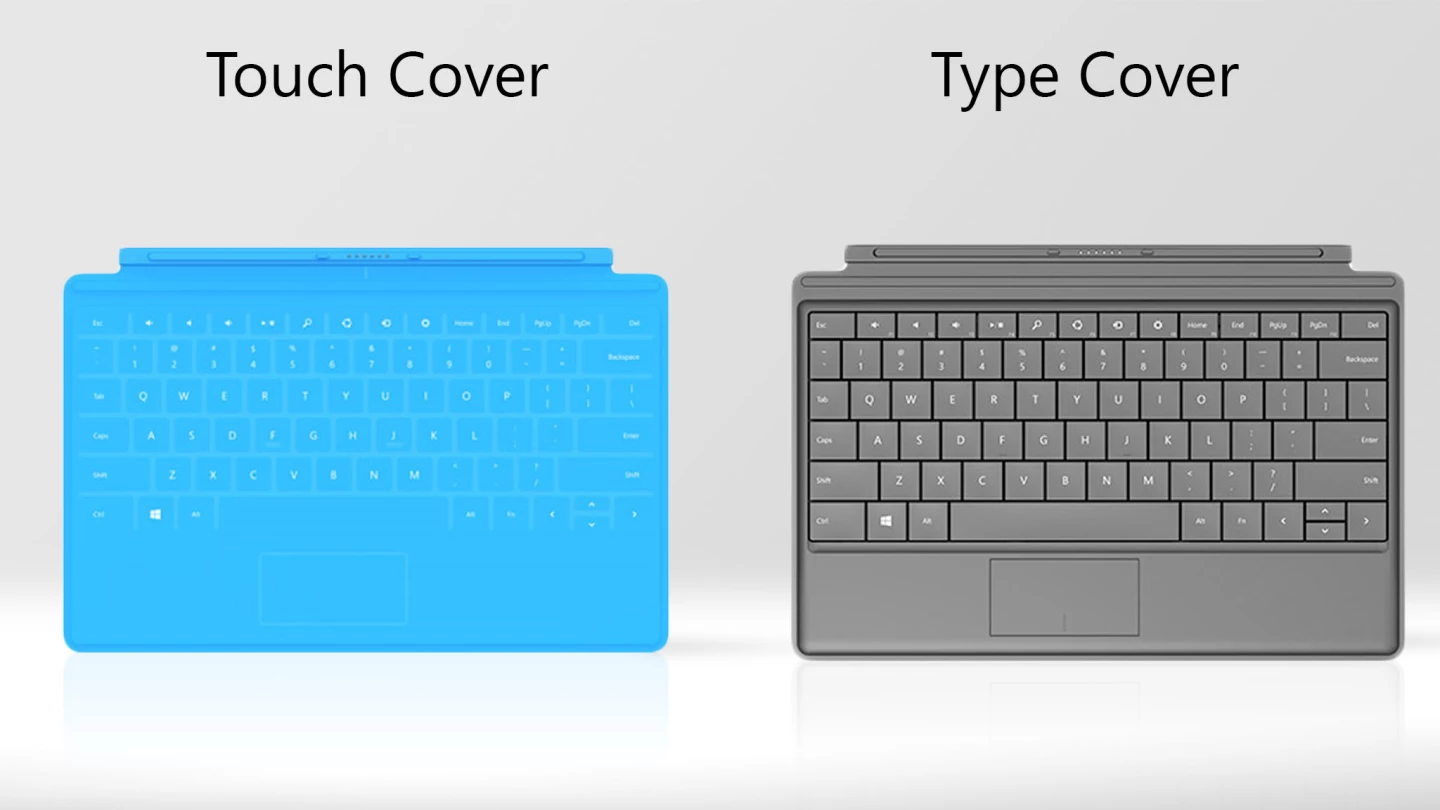
The Touch Cover, available in several different colors, is a bit lighter and thinner, but I found it to be a pain to type on. Imagine a touch screen that's soft (but not very cushiony) with indentations for the individual keys. I only spent a few minutes with it, but struggled to type a single word without cursing its very existence. Some customers, after having a similar start, claim to have gradually adjusted, and can now type fairly quickly. But if you plan on typing regularly, you're probably better off with the Type Cover. Or, at the very least, you'll want to try before buying.
So, for this review, I used the Type Cover, which is more of a classic keyboard with physical keys. It gives you a much more familiar typing experience, with that physical keypress feedback that I missed so much on the Touch Cover.
Both keyboards give you a small trackpad just south of the keys. It's a far cry from the responsive large glass trackpads on Apple's MacBooks, but, in most cases, it gets the job done. Despite its limited size and occasional unresponsiveness (mostly due to the cover's somewhat flexible build), I was happy to have it when using desktop apps.
Even if the trackpad isn't doing it for you, there are other options. You can always do it the old-fashioned way, and connect a USB or Bluetooth mouse. You can also reach up and swipe the touchscreen, even when the Surface is in laptop mode (that's usually the easiest way to scroll through webpages).
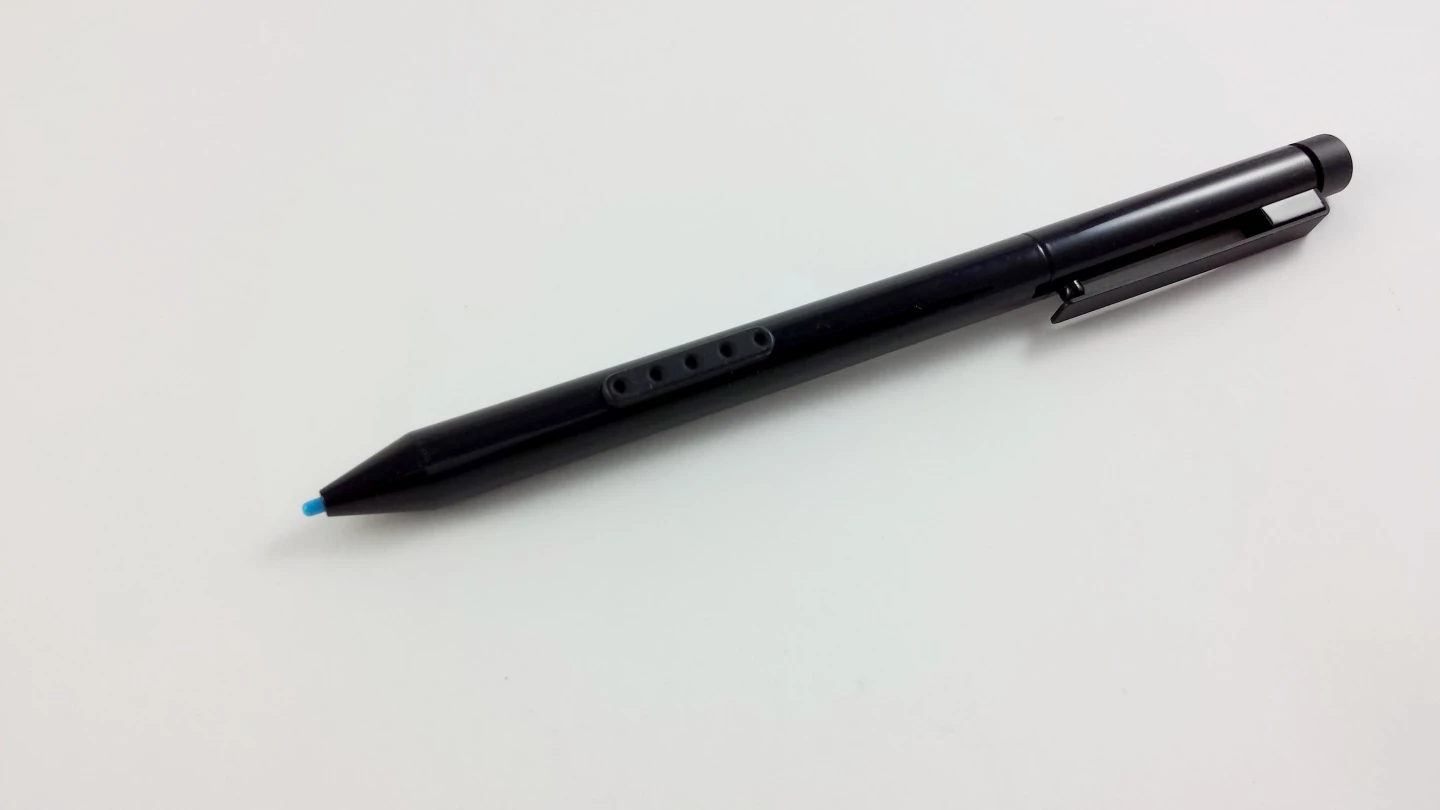
Or you can use the bundled "Surface Pen" (stylus). It make for a great mouse replacement, and is especially handy for navigating desktop apps while in tablet mode. The tablet features palm rejection for stylus use, which worked extremely well for me. It lets you rest your hand on the screen when penning, without worrying about registering unwanted touches.
The stylus is also capable of pressure-sensitivity, and though that part doesn't work out of the box in Photoshop, you can manually install a Wacom driver that adds pressure support.
Performance and gaming
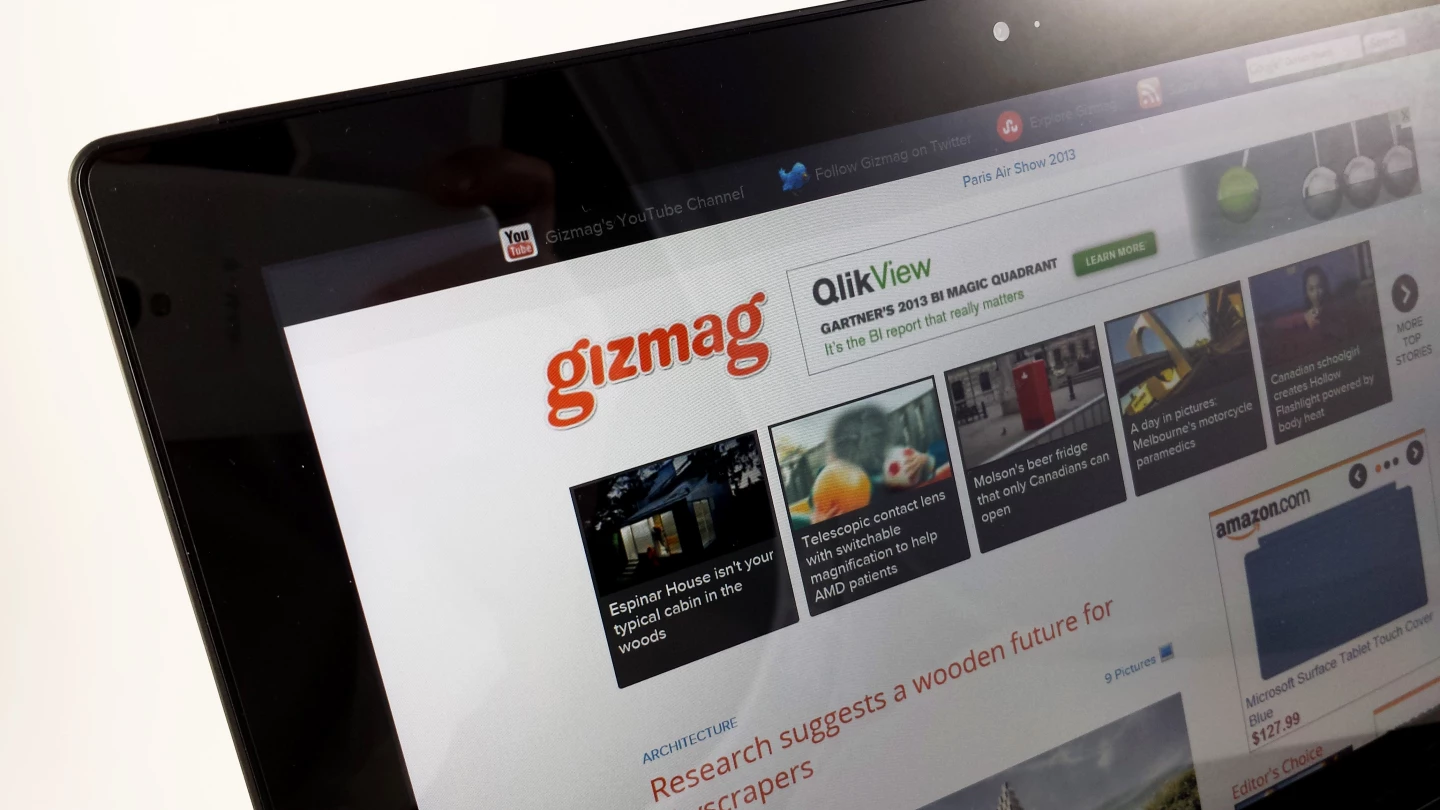
The Surface Pro's performance is in the same general range as many late 2012 or early 2013 Ultrabooks. That's because you'll find its Intel Core i5 (Ivy Bridge) processor in many of those same machines. Here we're looking at a dual core chip, clocked at 1.7 GHz (with turbo boost cranking that up to 2.6 GHz). Rounding out the technical side, we're also looking at 4 GB of RAM, and an Intel HD Graphics 4000 integrated GPU.
Most Metro (Windows Store) apps won't come anywhere close to pushing the hardware to its limits. Those mobile apps are child's play for this Intel processor. So you'll need to visit the desktop to get a better perspective.
The Surface Pro blazed through everything I threw at it in Photoshop, and didn't take long even when applying advanced filters. I typically left a variety of apps open, including several browsers with multiple tabs open. No issues whatsoever: I don't see many people having a beef with the Surface Pro's performance.

Without a dedicated graphics card designed for gaming, the Surface Pro is only going to do so well in that department, but it didn't exactly disappoint either. In my tests, Batman: Arkham City ran without a hitch, as long as I didn't use full HD resolution. Setting the game to 1366 x 768 with low graphical settings, everything was extremely smooth, without losing much visually. It ran just as well and still looked terrific when connected to a 47-inch, 1080p TV.
Of course we're talking about a two-year-old game here, so let's not get ahead of ourselves. A high-end gaming rig this is not. But the fact that relatively recent games like Arkham City are even an option once again reminds you that the Surface Pro is a new breed of tablet. In terms of hardcore gaming, it's leaps and bounds ahead of the iPad and other mobile-processor-powered tablets.
Battery life
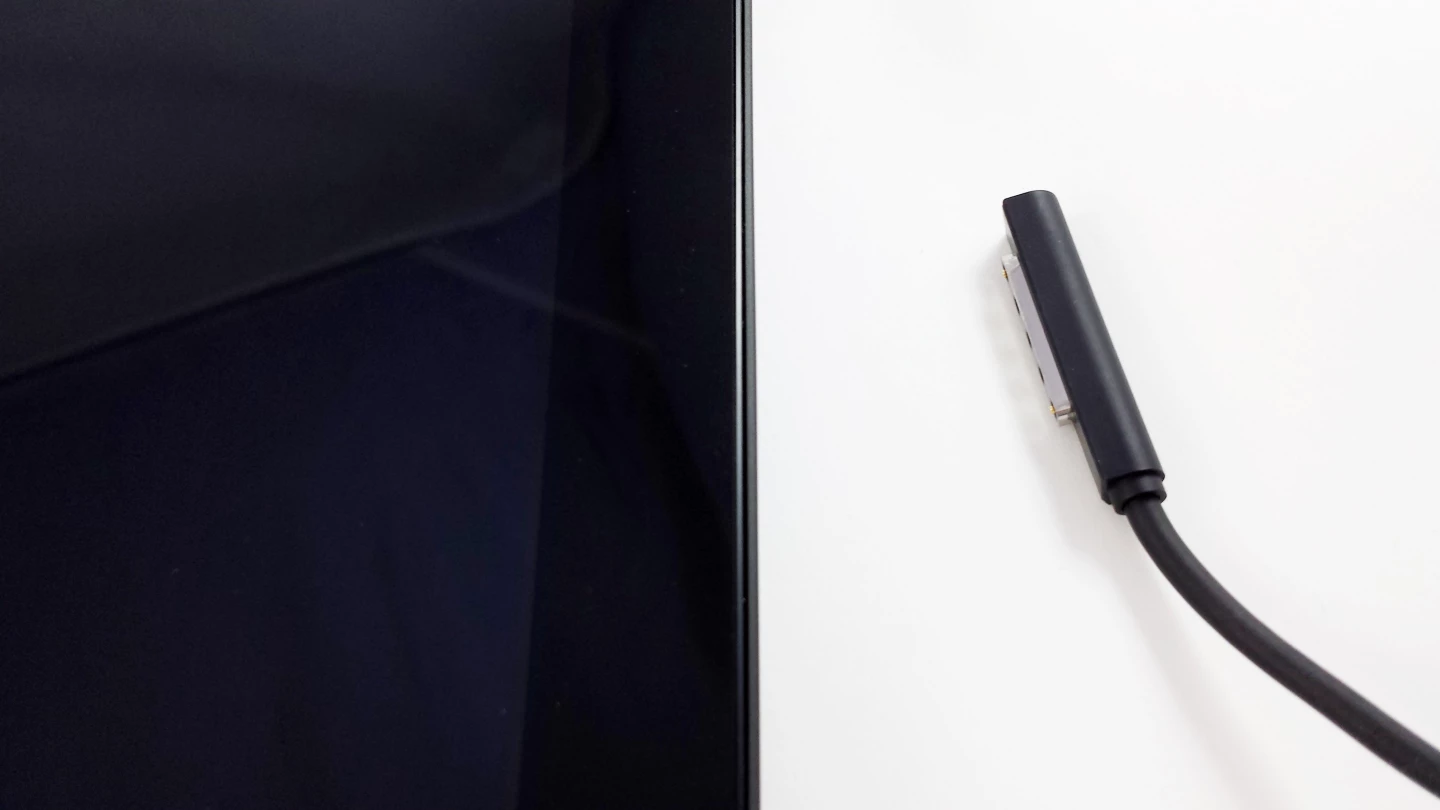
We've already covered several areas where the Surface Pro has some big advantages over mobile processor-based tablets like the iPad. Battery life, however, is not one of those perks.
In my test, I streamed Netflix videos continuously with brightness set at 50 percent. There was nothing out of the ordinary running in the background, Wi-Fi was on and Bluetooth was off. Under these conditions, the Surface Pro lasted for four hours and ten minutes.
Under more standard conditions (web browsing, email, reading, the occasional video, working in Microsoft Office, etc.) it should easily last longer than that: maybe five to six hours of continuous use. If you're only using the Surface in spurts, this kind of usage could potentially have it lasting a full day without charging.
This is where your priorities are going to come into play. Do you need a tablet that you can tote around all day long, commuting, traveling, using regularly with no power outlet in sight? Then this isn't the tablet for you. But if you want an extremely versatile device that you can use around your home, office, or other places where you can easily charge when needed, then this might not be such an issue.
One bright side of battery life is that Microsoft's bundled charger does its job pretty quickly. You should be able to go from empty to fully-charged in around two and a half hours.
There's also an X-factor when it comes to battery life. Though it's unannounced and unconfirmed, we'd be surprised if Microsoft didn't eventually release a second-generation Surface Pro with a Haswell-based Intel processor. That model should dramatically improve on the current model's battery life. At that point (early 2014, maybe?), you might be able to get these perks of a Windows 8 tablet and iPad-like, or close to it, battery life.
But if you can't wait that long, you'll have to ask yourself what's more important: full PC power and software, or all-day battery life?
Storage

Another potential drawback is the amount of usable storage on Surface's solid-state drive (SSD). Microsoft sells the Surface Pro in 64 GB and 128 GB models (select resellers are now offering a 256 GB model, but that isn't widely available yet).
Windows 8 and its recovery partition, however, take up so much space that you're only left with 28 GB (on the 64 GB model) or 85 GB (on the 128 GB model) of available storage. That's either 43 percent or 66 percent of what you might think you were getting, if you weren't familiar with how these things typically work on PCs.
So, again, you're going to want to take a good look at what you'll need this device for. If you use Steam and leave several high-end games on your PC at one time, you'll almost certainly want the 128 GB model (or the rarer 256 GB version, if you can get your hands on one). If you leave all of your photos and home movies stored on your PC, then you might also want a pricier model. Ditto for HD movies.
Surface Pro does help out a bit, though, by letting you pop in a microSD card. That adds up to 64 GB of storage, which can help out with those photo libraries and movie collections. You can also get an external USB hard drive to store the files and media that you don't always need immediate access to.
Also don't forget about cloud storage. Microsoft's Skydrive is heavily featured in Windows 8, and you can also use services like Dropbox, Google Drive, Box, or Bitcasa to untether your files from your Surface's hard drive. The native versions of those apps will store copies of your files locally, but the web versions will leave them waiting in the cloud until you need them.
Price of admission

The Surface Pro starts at US$900 for the 64 GB model. If you go for the $1,000 128 GB version (probably a good idea) and add the Type Cover (almost essential), then you're looking at a $1,130 purchase.
Is it worth it? Well, maybe a better question is how many other devices the Surface Pro can replace for you. And the answer to that might depend on how many tradeoffs you can live with:
- As a tablet, the Surface Pro is thicker and heavier than something like the iPad, and it doesn't give you nearly the same touch-centric app selection or battery life.
- As a laptop, it gives you a flimsier keyboard and a smaller, less reliable trackpad than a quality Ultrabook. Its battery life also isn't in the same league as the new 2013 MacBook Air or other upcoming Haswell-based laptops.
- As a desktop PC, Surface doesn't give you the horsepower or dedicated graphics cards that high-end home PCs can, and you can't crack it open to upgrade its components. You'll also need to have a monitor, wireless mouse, and keyboard on the ready, in order to truly build a full-fledged Surface Pro workstation. Windows 8's second-display scaling has induced more than its fair share of headaches too.
But if those compromises aren't a big deal to you, then you might be looking at a device that can replace $2,500 or more worth of computing products. From that perspective, that $1,000+ pill might be a little easier to swallow.
Wrap-up
Are you the kind of person who hops from tablet to PC to laptop, and wonders why you can't just have one computer that does all three? If so, then devices like the Surface Pro really are beginning to fulfill that promise. The "beginning" part, though, is key. This first batch is bulky and has too short a battery life to be considered the perfect solution for the multi-device user.But that doesn't mean the first-generation Surface Pro isn't still worth taking a long, hard look at. It's an exciting new kind of PC. It's a jack of all trades machine. And though it may not be the master of tablet, laptop, or desktop, the fact that it can do all three pretty darn well is masterful in itself.
Product page: Microsoft
























